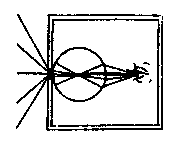 CHArt
CHArt  CHArt
CHArt Computers and the History of Art - 1999 Conference Paper Abstract
A recent publication by theorist Robin Evans, The Projective Cast (Evans, 1995), traces the relationship between projective geometry and the generation of architectural form. His work demonstrates the historical development of Architecture has being limited by the ability to describe form on paper and hence related to the drafting tools and techniques available at any given period. One of Evan's wry comments is that architects produce drawings not buildings. The computer as todays 'tool' allows a re evaluation of this observation.
Evans summarises his thesis by way of a tetrahedral diagram with maps the influence of projective drawing on the conception, evaluation and realisation of architecture. Thus, unlike most art forms where medium and object are concurrent, architecture operates twice removed from its object -the architectural project is developed in a representational medium (traditionally drawing) and then realised via the neutralising filter of building construction. This paper discusses alternate procedures made possible by the use of digital technology: the use of generative modeling techniques, the potential of virtual environments to allow immersive editing of form, and the precedent of CAD CAM production to realise architecture as a direct replica of the virtual model.
It is argued that the impact of these innovations is that the tetrahedral model proposed by Evans collapses - the nodes dissolve and the distinction between designer, immersive model, and realised project is blurred. Perhaps to the extent that the designer has a sense of crafting the object as opposed to describing its form on paper.
The presentation concludes with a discussion of the implications of such digital 'craft' for the future education of architects.